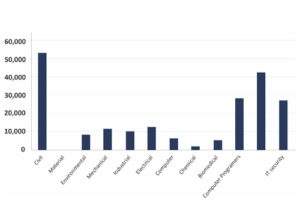According to the current scenario, civil is a fast growing engineering branch in India. The Civil engineering sector is craving for 400000 workforces whereas only 60,000 civil engineers are available today. As per the international conference on sustainable civil engineering, the branch of civil is filled with more than 50,000 jobs in the coming times.
Based on the last 17 years, engineering colleges offered more seats to IT & computer science in comparison to other branches. Even after adding the seats of IIT’s, government colleges, and private colleges, civil engineering students are not even 10% of the whole lot. If you are a student who is aspiring to serve the country as a civil engineer, these facts are necessary for you to read.
Future Prospects of Government Jobs
Civil engineering is the second oldest branch in the field of engineering. In the past, it was known as “Military Engineering.” The future of civil engineers is very bright due to the following reasons, mentioned hereby.
Railway Sector: Trains today that are bad in quality require maintenance and innovation towards improvement. Thus, Bullet trains are going to be a wonderful project in the upcoming times.
Real Estate: Civil engineers will be required in construction projects, quality testing laboratory, and consultancy companies.
Salary Packages & Scope of Jobs in India and Outside
The qualified civil engineers can get jobs in multinational companies or say, they can work in Singapore, USA as there is an increasing need of Indian civil engineering professionals. Moreover, the packages are plentiful and vary from one country to another.
Conclusively, the wide scope of civil engineering mentioned above speaks everything in itself. If you opt for the branch of civil engineering, look on to sharpen your computer skills for better opportunities.





